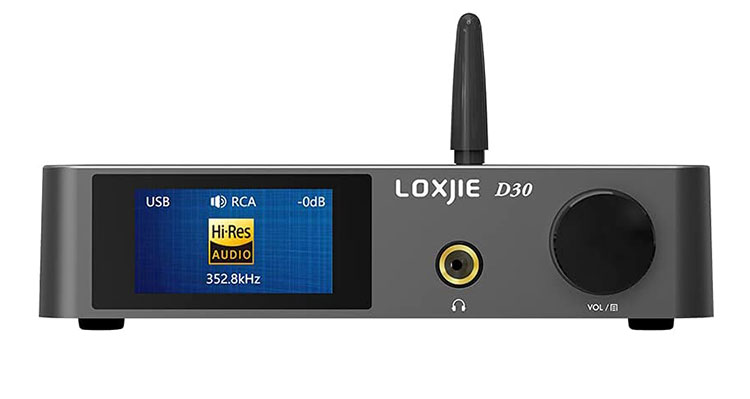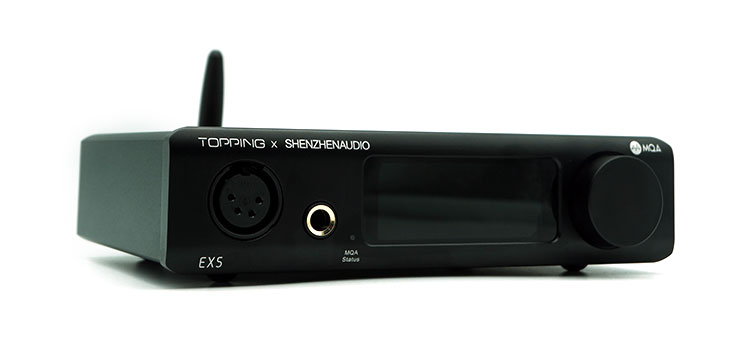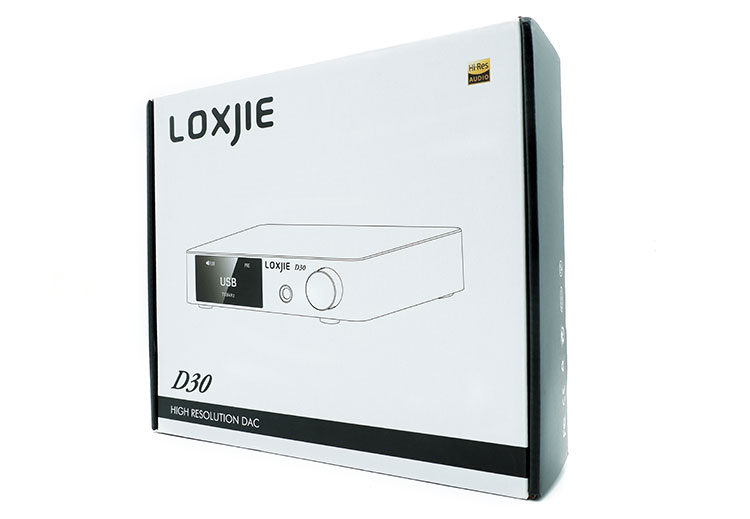Synergy
Power
The Loxjie D30 is rated at 110mW into a 32Ω load with enough current to ensure most of my headphones play generally loud. Most low impedance headphones with dynamic drivers like the Austrian Audio Hi-X65 can easily be powered.
With planar magnetic driver-based headphones like the Hifiman Ananda, the headphone amplifier section on the D30 delivers enough power to drive them sufficiently.
Pairings
As a stand-alone DAC/Amp, the D30 pairs well with a wide range of headphones. Both dynamic driver and planar magnetic driver-based headphones can take advantage of the D30 as a DAC/Amp.
For dynamic driver headphones, the best pairing that I found is with the classic Sennheiser HD600. This pairing allows the HD600’s more euphonic midrange presentation to complement the D30’s more relaxed and fluid overall presentation.
With planar magnetic driver-based headphones, on the other hand, I was surprised to hear that the Hifiman Ananda made a great pairing with the D30.
While the D30 has a more relaxed presentation, it worked well with Ananda’s faster presentation giving it more of a mid-bass hump and the perception of a more immediate sense of attack and overall control in the bass region. The vocal range is also brought forward giving it a more natural presentation.
The greatest strength of the D30 though is its DAC section. Paired with the Loxjie A30 allows both to play to each other’s strengths with the more relaxed presentation of the D30 complimenting the A30’s more vibrant performance.
The Loxjie stack easily complements an even wider variety of headphones. The most striking pairing though is with the HarmonicDyne Poseidon.
The more balanced presentation allows Poseidon’s more dynamic character to shine through. This pairing also does well in casting an expansive soundstage while creating accurate images within the soundstage.
Select Comparisons
Topping EX5
$349.99
Technical
Compared to the Loxjie D30, the EX5 also uses an XMOS USB controller with the XU216 but this time it feeds into 2xESS9038Q2M DAC.
This allows the EX5 to also have the same decoding capabilities as the D30, maxing out at 32bit/768kHz, DSD512, and the option to decode MQA. Both devices also have a Bluetooth adaptor that allows for AptXHD and LDAC.
Unlike the D30 though, the EX5 has a balanced connection for both the headphone output section as well as the preamp output section. The EX5 also has a lower measured THD+N of 0.0003%.
The headphone amplifier section on the EX5 is rated for significantly more power with a 3W output rating into a 32Ω load. However, both DAC/Amps can easily drive most of my headphones to sufficiently loud levels.
Design
Physically, the 2 DAC/Amps take up about the same amount of desk space, except that the EX5 is wider but more shallow. Both devices utilize a volume dial that doubles as a menu selector, but the one on the EX5’s volume dial is a bit more difficult to turn since it has less space underneath, so stubbier fingers might have a harder time turning it.
Both the DAC/Amps have remote controls, however, the one on the EX5 is less accurate particularly when you’re controlling the device from further away.
The menu system on the other hand is less intuitive on the EX5 since the menu navigation is done using a series of 7-segment displays instead of a full IPS display that shows textual information.
Performance
Based on the specs sheet, the EX5’s rated power output far exceeds the 110mW into 32Ω that the D30 can provide. However, with my listening tests, most of my headphones including the high impedance HD600, and the planar magnetic Sendy Peacock can run well on both amplifiers, so that perceived advantage can almost be written off.
Comparatively, the bass on the EX5 has an equally smooth presentation. This allows bass riffs to have a more flowy character while drum hits end up having a bit too much sustain. When it comes to the attack in each drum hit, the EX5 is a step ahead giving it a more natural presentation particularly in the mid-bass region.
With vocal tracks, the nuance in the vocal delivery is more pronounced with the EX5, but both amplifiers are generally smooth. However, the EX5 is more successful in creating the illusion of an overall more expansive and layered soundstage presentation. Instruments such as electric guitars are also similarly smoother with the EX5, but the EX5 presents details more readily.
Whilst both DAC/Amps have a similarly smooth treble presentation, cymbal hits on the EX5 have more bite but still retain a similar level of shimmer and texture. This results in the EX5 veering towards some sibilance, but based on my experience, both the D30 and EX5 typically won’t get too fatiguing anyway.
One of the biggest advantages of the EX5 over the D30 though is the ability to create an overall more layered soundstage. Although the directionality of the images formed within the soundstage are generally similar, the layering is more pronounced and the depth is more noticeable.
SMSL SU-8s
$359
Technical
Despite having a price gap, the 2 DACs have quite a few similarities internally. Both DACs are equipped with a dual-core XMOS USB controller chip and have the capability to decode MQA through both USB, coaxial and optical connections because of an ESS9068AS DAC.
Both are also capable of decoding 32bit/768kHz PCM and DSD512. However, the SU-8s features a pair of 3-pin balanced XLR outputs with a superior THD+N rating at 0.00009%.
Furthermore, the 2 DACs are also similar in that they have a very similar set of inputs, where both of them have USB, Coaxial, Toslink, and of course Bluetooth. However, SMSL doesn’t throw in a headphone amplifier circuit, keeping the SU-8s as a pure DAC without an option to directly output to headphones.
Design
Although both DACs have an aluminum chassis, the grey finished D30 has a softer aesthetic compared to the SU-8s. When lifting both DACs the SH-8s is the heavier of the 2, maybe because it’s wider to accommodate the pair of balanced XLR outputs.
At the rear, the arrangement of both devices is very similar, but the SU-8s tends to get a bit more crowded despite having more space since it also has a pair of balanced XLR outputs. Both DACs also use a standard IEC power plug, however, the one on the SH-8s doesn’t have a physical power switch to isolate it from the mains.
The front of the device is also similar since they both have a colored screen that clearly shows the status of the device. Both DACs also have a volume knob that also works for menu navigation, but the one on the SH-8s feels a bit more premium since it’s made of metal.
Each DAC has an included remote control, but the one on the SH-8s is a generic version that comes with most SMSL products making it more of a universal remote control with different modes.
This makes the remote a bit harder to use comparatively since you’ll have to keep pressing “C” before using it to control the SU-8s. Also, the remote on the SH-8s is comparatively less sensitive.
Performance
The first thing that I noticed is that the SU-8s has a more elevated mid-bass region, which gives drum hits more weight while both DACs can display the same amount of details regarding the hollowness of the drums being hit. Bass guitars similarly have a flowy character on both, but the SU-8s injects more body into each note.
The SU-8s presents a more forward midrange, allowing the vocalist to come further forward in the mix. This also allows the vocal quality to be more detailed and edgy with vocals such as grunts or the raspy quality of some vocalists such as Adele easily picked up.
With instrument timbre, both DACs are fairly accurate, but the SU-8s is the more energetic with a more prominent ‘crunchiness’ in electric guitar chords. Both DACs still have an accurate presentation of instrument timbre staying true to how the instrument is supposed to sound.
I would say both have an even-handed and safe treble presentation, but the SU-8s tends to venture a bit more into some sibilance. Although this makes the SU-8s more energetic and edgy, it can get more fatiguing compared to the D30.
Although both DACs present a generally expansive soundstage, the atmosphere and the separation of images within the soundstage are more prominent with the SU-8s.
Likewise, instrument separation and layering are more prominent with the SU-8s. When it comes to dynamic range, both DACs have some shortcomings, with the SU-8s leaning towards playing louder, while the D30 is comparatively less excitable.
Our Verdict
At first glance, the D30 is a compact desktop DAC/Amp that is equipped with lots of options such as a headphone amplifier section, various input options including Bluetooth and MQA.
It may seem like the number of features available on D30 are there to fill up a specs sheet. However, upon closer examination, each feature equipped in the D30 is well thought out to make it a truly versatile unit.
The D30 is capable of driving most of the headphones that I threw at it. With the more relaxed and smoother presentation, it can easily complement most headphones, particularly ones with a drier presentation or ones that may be a touch fatiguing.
Running the D30 as a pure DAC brings out its true strength maintaining a smooth and relaxed presentation. It has enough detail to perform very well with stronger amplifiers.
Loxjie D30 Technical Specifications
- Input: USB, Optical, Coaxial, Bluetooth
- Output power (headphone amp): 110mW(32Ω)
- THD + N: 0001%(-120dB)
- Dynamic Range: 123dB
- SNR: 123dB
- Output Impedance: RCA 100Ω/Headphone 1.1Ω
- USB Transmission: Asynchronous
- Sampling Rate: USB 44.1~768kHz/DSD64-512 Optical/Coaxial, 44.1~192kHz/DSD64(DoP)
- Bluetooth: Bluetooth 5.0(SBC, AAC, apt-X, apt-X HD)
- Power Consumption: 5W
- Standby Power: <0.5W
- Size: 151 x 170 x 38mm(WxDxH)
- Package size: 269 x 233 x 74mm (WxDxH)
- Weight: 535g






